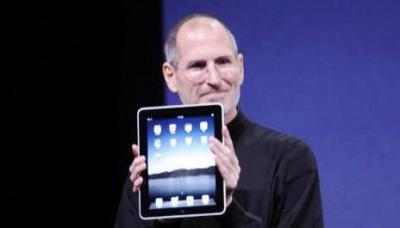The iPad At 7: A Visual History

The iPad is seven years old. Here are the tablets that defined a whole market.
The first iPad was shown off by Steve Jobs on 27 January 2010. It was greeted with curiosity and bemusement seven years ago, but it created an entire market and changed the way we both work and create.
“It’s the best Web experience you’ve ever had,” Jobs told the audience at the Yerba Buena Gardens event centre in San Francisco, showing off numerous entertainment and productivity applications.
The range hasn’t been refreshed in more than a year but it is expected that a number of new iPads will make their debut early this year. However we decided to mark the occasion, we thought we’d take a trip down memory lane.
iPad
The one that started it all is a little primitive by today’s standards but is widely regarded as the first modern tablet. The 9.7 inch form factor was so alien that many joked it was just a large iPhone, but it was received well critically and sparked countless entertainment and productivity applications.
It was released in April 2010, powered by the 1GHz Apple A5 chip, 256 of RAM and iOS 3.2. Like all subsequent models, it was available in Wi-Fi only and cellular variants, and owners could choose between 16GB, 32GB or 64GB of storage.
Three million were sold within 80 days and at one point the iPad outsold the Mac.
iPad 2
While the iPad may have created a whole new form factor, it was the iPad 2 that refined it. It was faster, lighter and had a 720p rear facing camera – so it was responsible for all those tourists using devices far too large to be practical for photos.
Introduced in March 2011, the iPad 2 was so successful that it was offered as a bog standard model as late as 2014 and formed the base of the iPad Mini. This meant it ran six versions of iOS – 4 until 9 – the only iPhone or iPad device to support as many software advances.
iPad 3 and iPad 4
The iPad 3 was where Apple’s nomenclature got a bit weird. Rather than simply being called the ‘iPad 3’, it was labelled ‘the new iPad’. Debuting in 2012, it added a retina display, more power and a 5 megapixel camera.
There was some controversy when it emerged that despite being labelled ‘WiFi +4G’, the cellular variant didn’t actually support LTE in some countries, including the UK. Whereas the iPad 2 lasted for three years, the iPad 3 only lasted six months, before it was replaced by the iPad 4.
Again, this wasn’t called the ‘iPad 4’, it was the ‘iPad with Retina display’, and again, came with more power, iOS 6 and the Lighting connector that was now standard in the iPhone range.
Quiz: What do you know about the iPad?